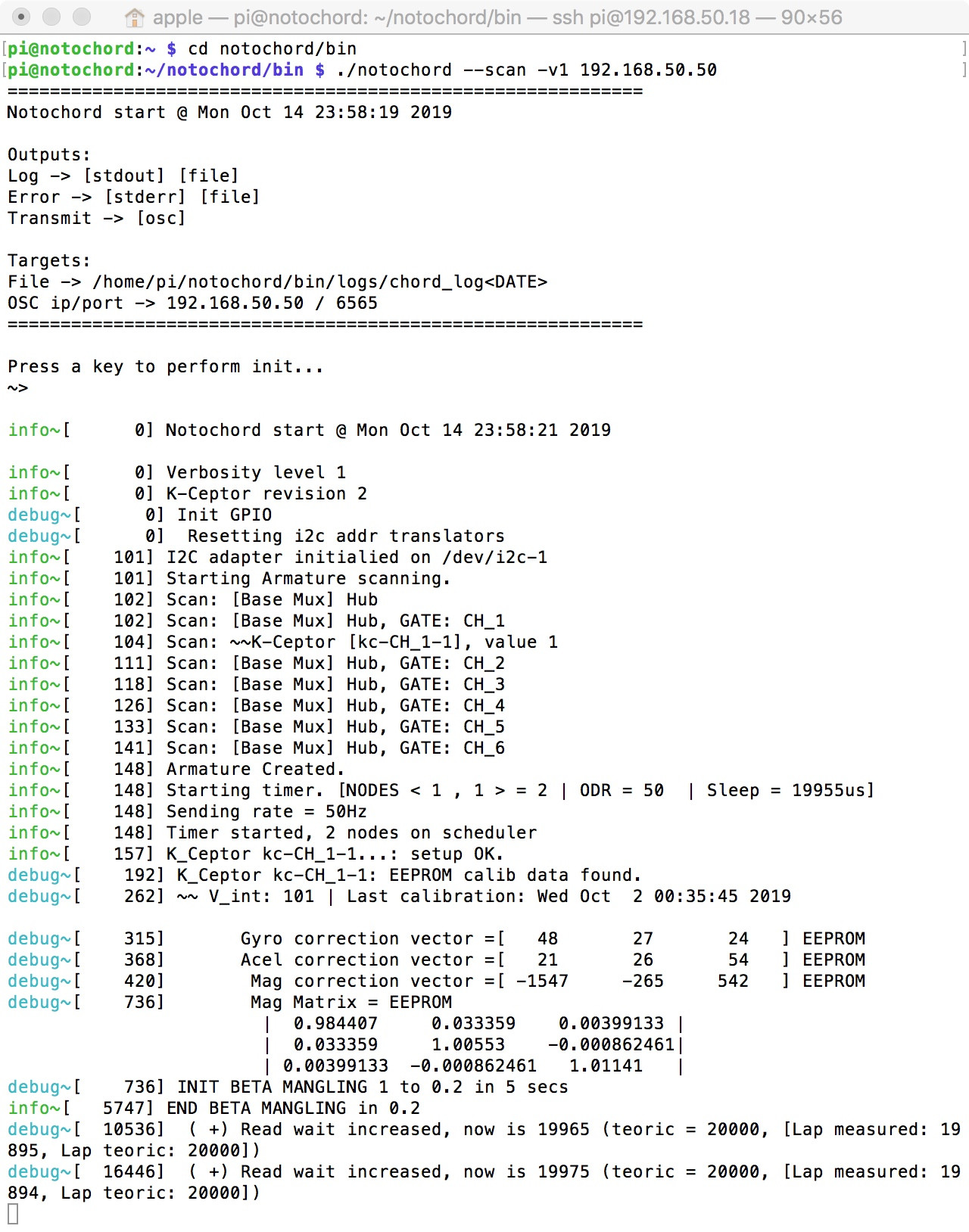Hey @daylanKifky,
I completely understand the delay. Between Maker Faires, the upcoming Blender conference, and developing new K-Ceptors, this is probably a busy month for the Chordata team. To answer your quesitons:
daylanKifky You were using the exact same hardware, software, and network to make the spinal tests (I assume) and they presented no lag
Yes, everything was the same.
Network Congestion
I also think this is unlikely, as in the past 4 people have shared the connection on my Asus Dark Knight router without problems. And when I run the tests I’m alone in my apartment, so I’m the only one using it. I have some freelance editing work this week, but I’ll get the required cables to test the default biped configuration over Ethernet as soon as I’m able.
Pose-processing delays
I’m not using debug mode. Although, here’s a screenshot of the panels as they appear after I load the default_biped blend file (I haven’t touched these when doing testing. Just the Connect and Receive buttons):

Also, I’m currently using 2.79b if that helps.
daylanKifky Why the default_biped test worked only after reloading the file? Have you noticed something similar before? This looks like a bug on the add-on. It would be great if we can reproduce the exact situation were it happens. What did you did on Blender before you made that attempt?
I have not noticed anything similar before, and I didn’t do anything special in Blender. My order of operations is this:
- Turn on the power and give my Raspberry Pi a moment to boot up
- Connect to the Pi via the MacOS terminal using SSH
- Run Notochord with the default_biped.xml file
- Open up default biped blend file and connect to the Pi
- Do my wireless mouse/voice command combo to start the T-Pose calibration and capture
- The joints don’t bend correctly, so I reload the default_biped blender file again, and for some reason it works
daylanKifky Why the K-Ceptors lost their calibration? I assume they were stored properly. Perhaps the temperature on your flat is now drastically different from the time you first calibrated them?
What is considered proper storage? Since the suit has a lot of parts, I store everything in a small canvas duffel bag that sits on my plastic lighting case on my equipment shelf which is made of metal. Also, the temperature in my apartment hasn’t drastically changed. Athough, I should ask: what sort of temperature fluctuation would cause the calibration to fail?
daylanKifky What's happening with K-Ceptor 1 in Group 4? That intermittent behavior you are describing seems to indicate some kind of bad contact on a component on the KCeptor. The U1 and U2 shouldn't be involved (otherwise you would get a communication error) but perhaps there's a badly soldered pad on some of the capacitors around U1.
Another possible bad soldering might be some pad on U3 (the memory). If you ever get this behavior again try running notochord with a higher verbosity level, in order for it to print warnings (such as a memory not found)
I looked at the connections under a magnifying glass, and everything seems to be soldered well. Here is a screen shot of me testing this K-Ceptor in verbose mode:

Hope some of this helps.